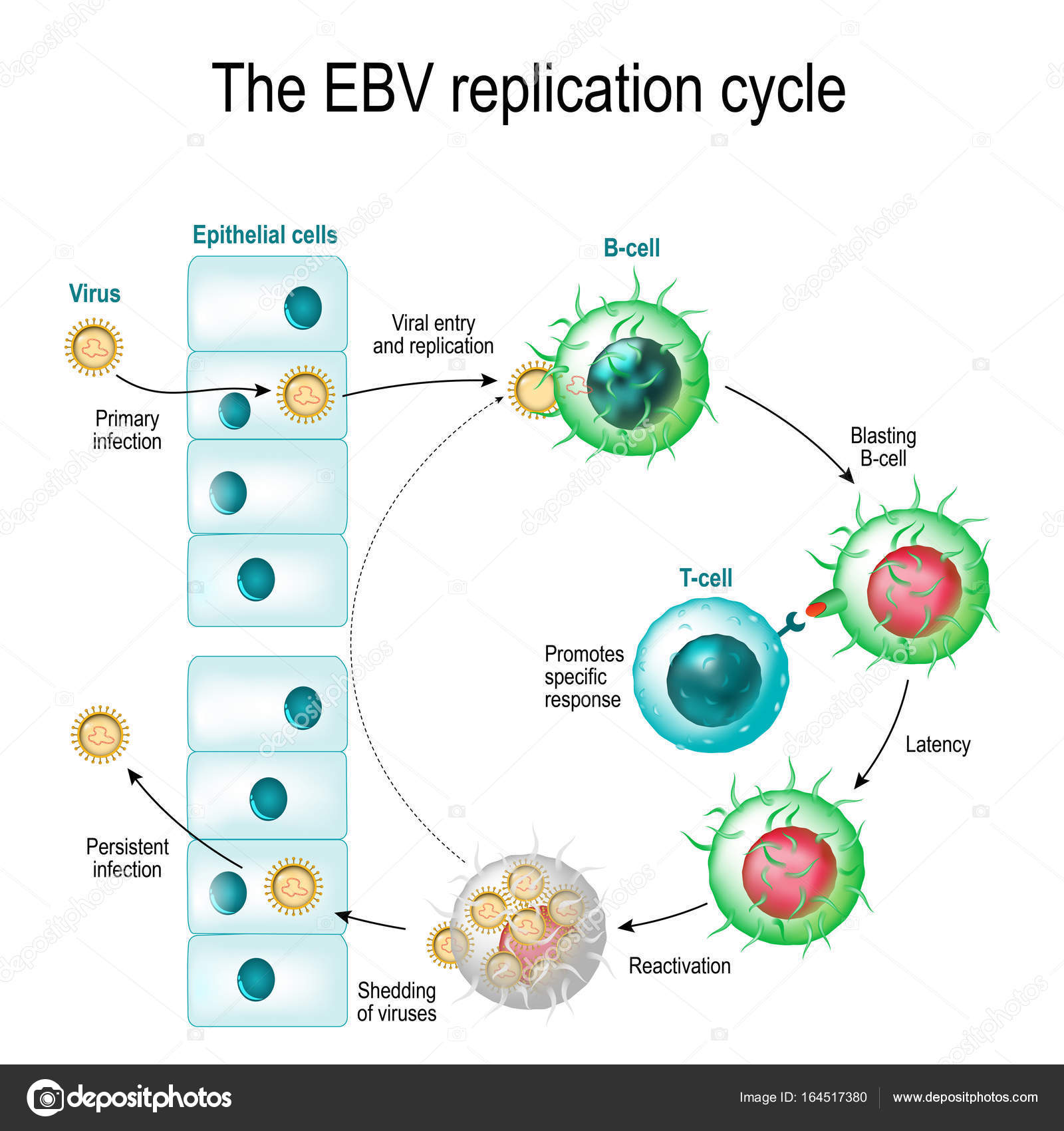Curr Top Microbiol Immunol. 2015;391:289-323. doi: 10.1007/978-3-319-22834-1_10.
Epstein-Barr Virus-Specific Humoral Immune Responses in Health and Disease.
Middeldorp JM1 Abstract
Epstein-Barr virus (EBV) is widely distributed in
the world and associated with a still increasing number of acute,
chronic, malignant and autoimmune disease syndromes. Humoral immune
responses to EBV
have been studied for diagnostic, pathogenic and protective (vaccine)
purposes. These studies use a range of methodologies, from cell-based
immunofluorescence testing to antibody-diversity analysis using
immunoblot and epitope analysis using recombinant or synthetic
peptide-scanning.
First, the individual EBV antigen complexes (VCA , MA, EA(D), EA(R) and EBNA) are defined at cellular and molecular levels, providing a historic overview.
The characteristic antibody responses to these complexes in health and disease are described, and differences are highlighted by clinical examples.
Options for EBV vaccination are briefly addressed.
For a selected number of immunodominant proteins, in particular EBNA1, the interaction with human antibodies is further detailed at the epitope level, revealing interesting insights for structure, function and immunological aspects, not considered previously.
Humoral immune responses against EBV-encoded tumour antigens LMP1, LMP2 and BARF1 are addressed, which provide novel options for targeted immunotherapy.
Finally, some considerations on EBV-linked autoimmune diseases are given, and mechanisms of antigen mimicry are briefly discussed. Further analysis of humoral immune responses against EBV in health and disease in carefully selected patient cohorts will open new options for understanding pathogenesis of individual EBV-linked diseases and developing targeted diagnostic and therapeutic approaches.
First, the individual EBV antigen complexes (VCA , MA, EA(D), EA(R) and EBNA) are defined at cellular and molecular levels, providing a historic overview.
The characteristic antibody responses to these complexes in health and disease are described, and differences are highlighted by clinical examples.
Options for EBV vaccination are briefly addressed.
For a selected number of immunodominant proteins, in particular EBNA1, the interaction with human antibodies is further detailed at the epitope level, revealing interesting insights for structure, function and immunological aspects, not considered previously.
Humoral immune responses against EBV-encoded tumour antigens LMP1, LMP2 and BARF1 are addressed, which provide novel options for targeted immunotherapy.
Finally, some considerations on EBV-linked autoimmune diseases are given, and mechanisms of antigen mimicry are briefly discussed. Further analysis of humoral immune responses against EBV in health and disease in carefully selected patient cohorts will open new options for understanding pathogenesis of individual EBV-linked diseases and developing targeted diagnostic and therapeutic approaches.
KEYWORDS:
Antibody-diversity Profiling; Epitope definition; Molecular Mimicry; Serological Diagnosis; Synthetic Peptides- PMID:
- 26428379
- DOI:
- 10.1007/978-3-319-22834-1_10
- [Indexed for MEDLINE]

Inga kommentarer:
Skicka en kommentar